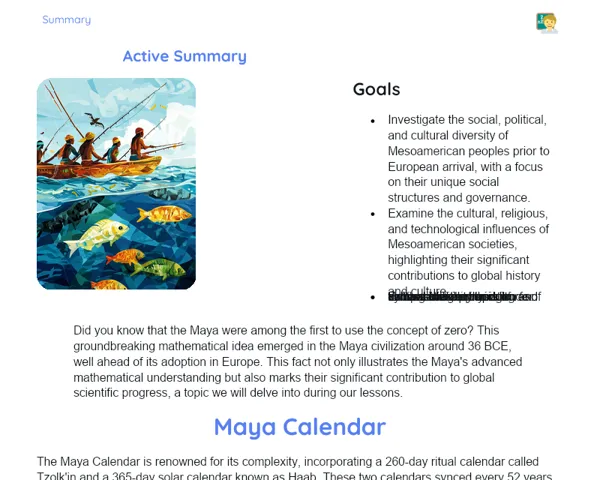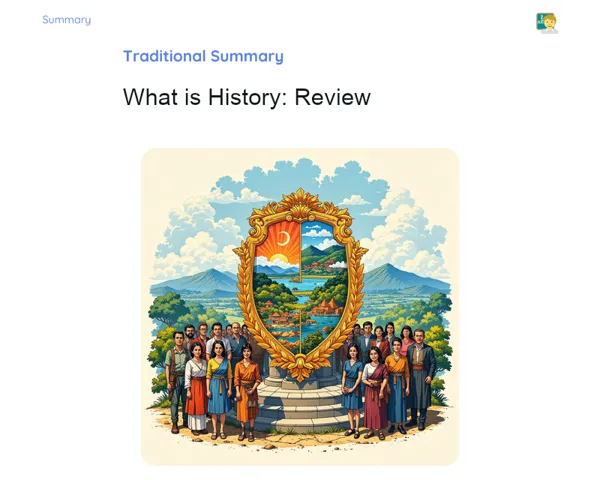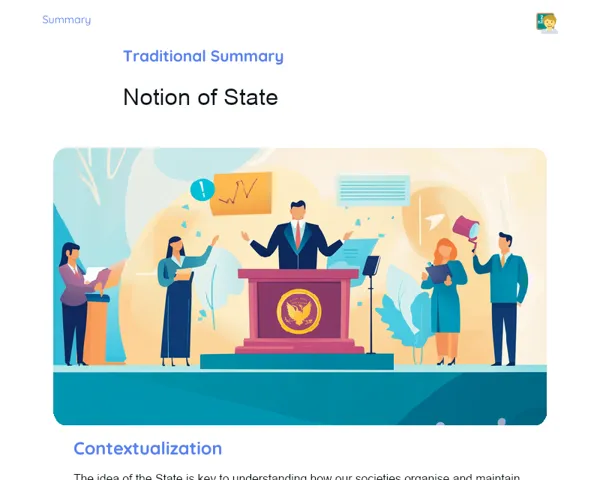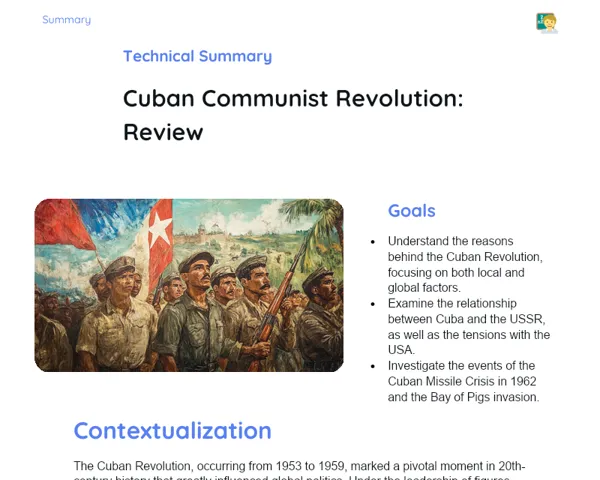Socioemotional Summary Conclusion
Goals
1. Understand the key events and figures of the Russian Revolution, with a spotlight on Lenin and Stalin.
2. Explore the global influence of the Russian Revolution beyond the borders of the USSR.
Contextualization
🌍 Did you know that the Russian Revolution was one of the most pivotal events of the 20th century? It reshaped not just Russia, but had ripple effects that changed the entire world! Familiarising ourselves with leaders like Lenin and Stalin is like setting out on an insightful journey, filled with challenges and tough choices. It teaches us valuable lessons about leadership, courage, and the consequences of our decisions. Let’s dive into this exploration and see how these figures shaped history and what we can take away from their legacies! 🚀
Exercising Your Knowledge
Historical Background of the Russian Revolution
The Russian Revolution of 1917 was a cornerstone event of the 20th century, leading to the collapse of the Russian Empire and the rise of the Bolshevik Party. Russia was marred by severe political and economic instability just before the revolution. With widespread dissatisfaction with the tsarist regime, made worse by the strains of World War I, the ground was ripe for change. Understanding this backdrop is vital in grasping how radical transformations can emerge from social turmoil and how these changes affect the emotions and decisions of those involved.
-
Political and Economic Turmoil: Pre-revolutionary Russia faced dire economic and social issues, highlighting vast disparities between the wealthy and the impoverished.
-
Public Discontent: The masses were fatigued by the autocratic tsarist rule and harsh living conditions.
-
Effects of World War I: The war amplified existing problems, adding immense pressure on the populace and government.
Lenin's Leadership
Vladimir Lenin was a central figure in the October Revolution, steering the Bolsheviks with a clear vision for change. His notable policies, including withdrawing Russia from World War I and nationalising industries, illustrate a brand of resilient and visionary leadership. However, his decisions weren't without their controversies and challenges. Studying his governance helps us understand how different leadership styles and emotional motivations can lead to significant transformations.
-
Leadership of the Bolsheviks: Lenin led the uprising against the Provisional Government and solidified Bolshevik control.
-
Marxism-Leninism Framework: A blend of Marxist concepts tailored to Russian contexts, advocating for a proletarian revolution.
-
Exit from World War I: The choice to leave the war through the Treaty of Brest-Litovsk stirred debate but aimed to refocus on internal upheaval.
Stalin's Regime
After Lenin's passing, Joseph Stalin took the reins of the Soviet Union, solidifying power via political purges and ambitious industrial plans. His leadership style was largely authoritarian and oppressive, leading to severe outcomes for the populace. Examining Stalin's government allows us to contemplate the emotional and social ramifications of extreme political choices and underscores the necessity for responsible decision-making.
-
Power Consolidation: Stalin strengthened his rule through political purges and sidelining opponents.
-
Five-Year Plans: Focused on rapid industrialisation of the Soviet Union, often resulting in human suffering.
-
Agricultural Policies: The enforced collectivisation led to famine and oppression, showcasing the fallout from authoritarian rulings.
Impact of the Russian Revolution on the Global Stage
The Russian Revolution didn’t just change Russia; it also sparked socialist and communist movements all over the world. The formation of the Comintern aimed to disseminate Soviet ideology globally, leaving its mark on various regions in Europe, Asia, and Latin America. This section highlights the extensive effects of the revolution and how ideas and movements can cross borders, influencing societies in varied and complex ways.
-
Creation of the Comintern: The Communist International was established to foster and support worldwide socialist revolutions.
-
Global Socialist Movements: The revolution served as a catalyst for movements in nations like China, Cuba, and Vietnam.
-
Reactions from Western Nations: Concerned about the spread of communism, Western powers took steps to counter this influence, setting the stage for the Cold War.
Key Terms
-
Russian Revolution: A revolutionary movement that culminated in the fall of the Russian Empire and the establishment of the Soviet Union.
-
Bolsheviks: The radical faction of the Russian Social Democratic Labour Party, spearheaded by Lenin, that seized power during the October Revolution.
-
Marxism-Leninism: A political ideology marrying the theories of Marx with the revolutionary practices of Lenin.
-
Collectivisation: An agricultural policy enforced by Stalin, converting small farms into large state-run collective entities.
-
Comintern: The Communist International, formed in 1919 to promote and support communist revolutions worldwide.
For Reflection
-
How did the feelings and motives of leaders like Lenin and Stalin shape their political choices and the trajectory of history?
-
In what ways can comprehending the hardships experienced by the populace during the Russian Revolution foster empathy and social awareness?
-
How can we implement the lessons of leadership and decision-making from the Russian Revolution to confront challenges in our own lives and communities?
Important Conclusions
-
The Russian Revolution stands as a key historical landmark that reshaped Russia and had a profound effect on the global landscape.
-
Figures like Lenin and Stalin played critical roles, with their decisions significantly influencing Russian society and the world.
-
The Russian Revolution inspired communist and socialist movements globally, inciting responses and conflicts that shaped the trajectory of the 20th century.
-
Studying the events and personalities of the Russian Revolution enlightens us on the impact of human emotions and motivations in political choices.
Impacts on Society
The legacy of the Russian Revolution is still felt today, particularly in discussions around political ideologies and social movements. The collapse of Soviet communism in 1991 didn’t erase the influence of Lenin and Stalin, which continues to be debated and studied globally. In today's context, both left-wing and right-wing movements often reference revolutionary Russia as a model to emulate or avoid.
For students, this historical narrative may seem a bit distant, but the emotions and conflicts that shaped it are universally relatable. Reflecting on how leaders like Lenin and Stalin dealt with pressures and made difficult decisions can inspire young people to consider their choices and the impacts they have on their communities. The history of the Russian Revolution serves as a potent reminder of how both individual and collective actions can shape the world we inhabit.
Dealing with Emotions
Why not try an exercise using the RULER method? Begin by taking a moment to recognise your feelings while studying the Russian Revolution. Ask yourself: How do I feel about Lenin and Stalin's decisions? Next, understand what’s behind these emotions. Why do these historical figures and their actions spark these feelings within me? Then, name these emotions using specific terms like 'frustration', 'admiration', or 'confusion'. The next step is to express these feelings, whether through writing or sharing them with a friend or family member. Finally, regulate these emotions by finding healthy coping mechanisms, like listening to music, exercising, or meditating.
Study Tips
-
Create visual summaries of the main events and figures of the Russian Revolution using mind maps or diagrams to assist with retention.
-
Watch documentaries and films related to the Russian Revolution to complement theoretical studies with visual and narrative insight.
-
Form study groups with peers to discuss the topic collaboratively and share diverse perspectives for a richer understanding.



